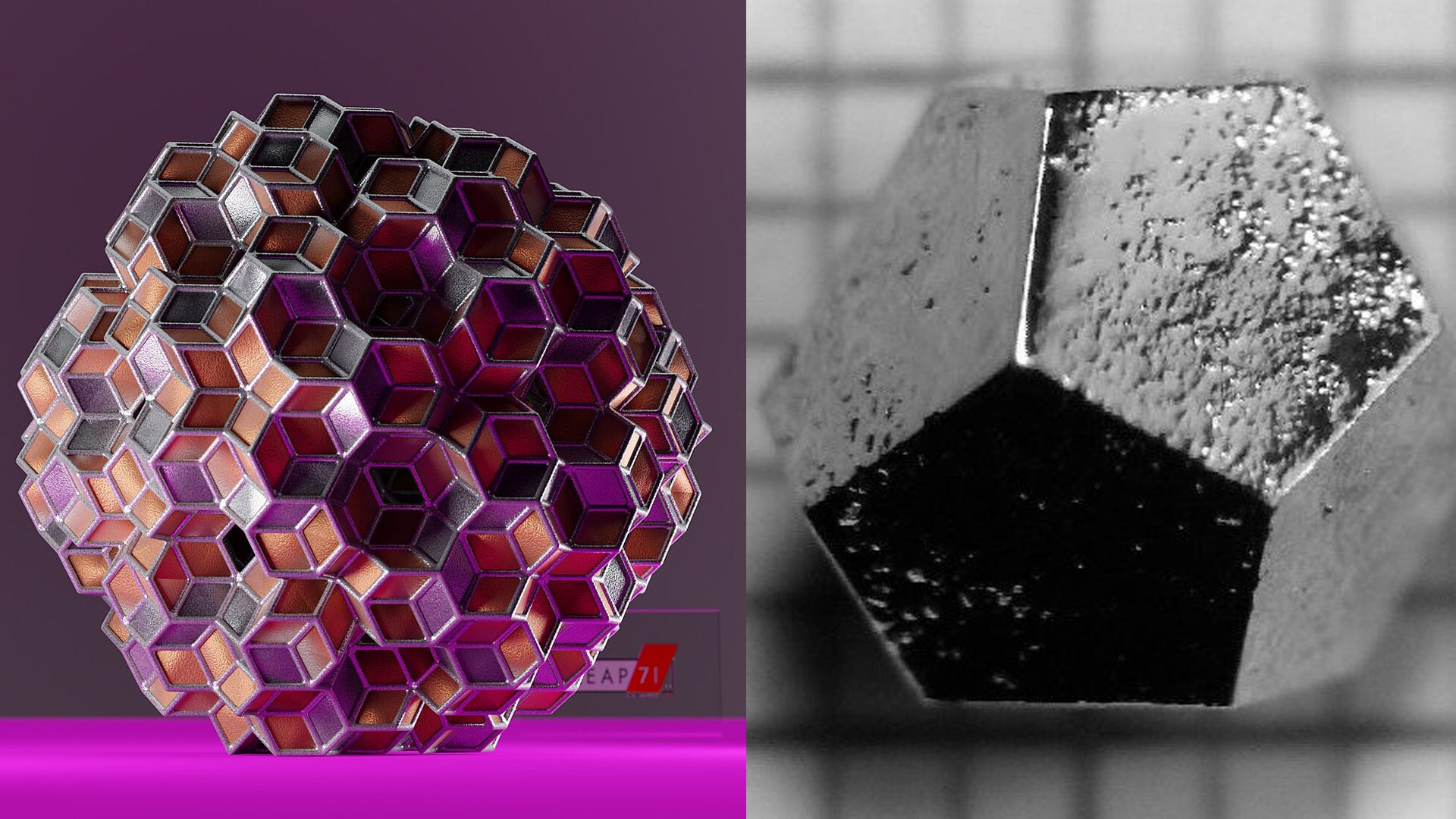
An international research team has revealed that four-dimensional structures can significantly affect the mechanical and topological characteristics of quasiperiodic crystals. This discovery underscores the notion that quasicrystals are influenced by concealed higher-dimensional physics rather than mere random formations.
A quasiperiodic crystal, often referred to as a quasicrystal, is a solid material exhibiting an ordered structure that never precisely repeats itself, unlike traditional crystals; however, it adheres to specific mathematical principles.
This fascinating crystal type was first identified in 1982 by Israeli scientist Dan Shechtman. He proposed that while a quasicrystal possesses a repeating (or periodic) structure, it does not exist in the three-dimensional space we perceive. Instead, its true periodic nature resides in a higher-dimensional realm, such as 4D or beyond.
The recent study brings new understanding to this fourth-dimensional characteristic of quasicrystals.
Exploring 4D through Quasicrystal Topology
In their research, the authors subjected a quasicrystal to electromagnetic waves and analyzed the resulting modifications in topology using near-field scanning optical microscopy (NSOM) and two-photon photoemission electron microscopy (2PPE).
NSOM is a sophisticated technique that employs a microscopic probe to scan surfaces, yielding highly detailed images that capture features smaller than those detectable by standard light microscopes.
Conversely, 2PPE examines the behavior of electrons in materials by exciting them with two photons and assessing their energy levels.
By utilizing these advanced techniques, researchers explored how electromagnetic waves interacted on the surface of a quasicrystal. This interference illustrated the latent traces of the fourth dimension embedded within the quasicrystal’s structure.
Initially, the patterns observed appeared distinct; however, upon further inspection, their topological properties in two dimensions were remarkably similar, to the point of being indistinguishable. The only method of differentiation lay in referencing a higher-dimensional crystal.
According to the study’s authors, “We found topological charge vectors in four dimensions (4D) that elucidate the real-space topology of 2D quasicrystals and highlight their intrinsic conservation laws” noted.
Additional Evidence of Higher-Dimensional Influence
A few years after Shechtman’s quasicrystal discovery, researchers Paul Steinhardt and Dov Levine developed theoretical models and frameworks that detailed the properties of these unique crystals.
One of their models posits that quasicrystals can be interpreted as projections of higher-dimensional periodic structures onto three-dimensional space, suggesting that concepts derived from four-dimensional crystals may illuminate some of their characteristics.
The present study’s authors discovered findings that resonate with Steinhardt and Levine’s theory. They observed two surface waves that initially appeared different and synchronized into identical patterns within attoseconds (a billionth of a billionth of a second).
This observation implies that surface wave patterns in three-dimensional quasicrystals may be influenced by hidden 4D periodic structures. Future research is anticipated to further elucidate this intriguing connection and uncover new pathways into higher dimensions.
The findings of this study have been published in the journal Science.









